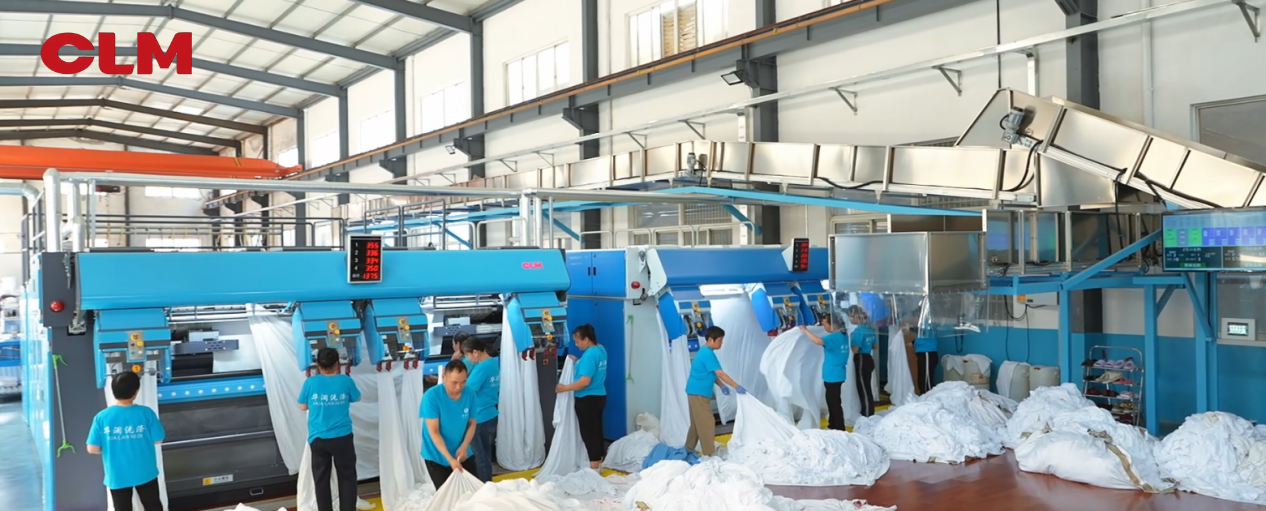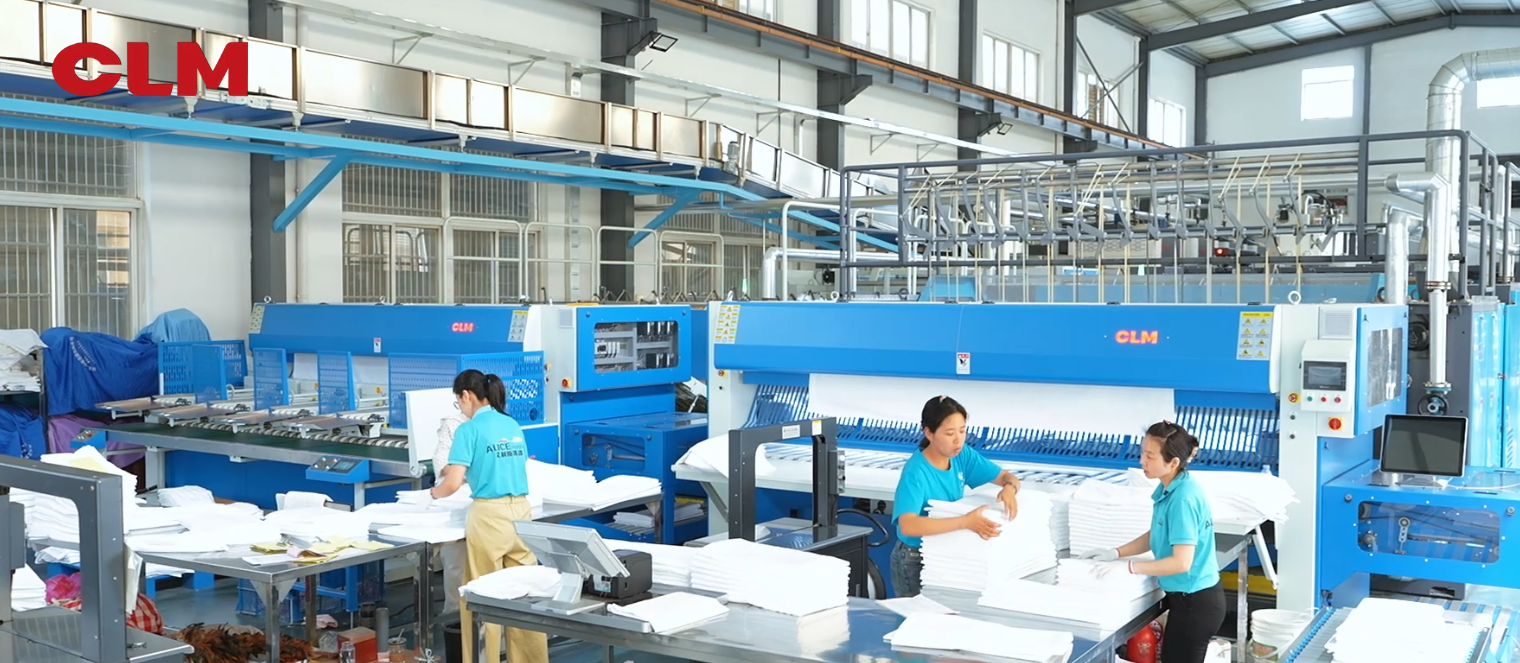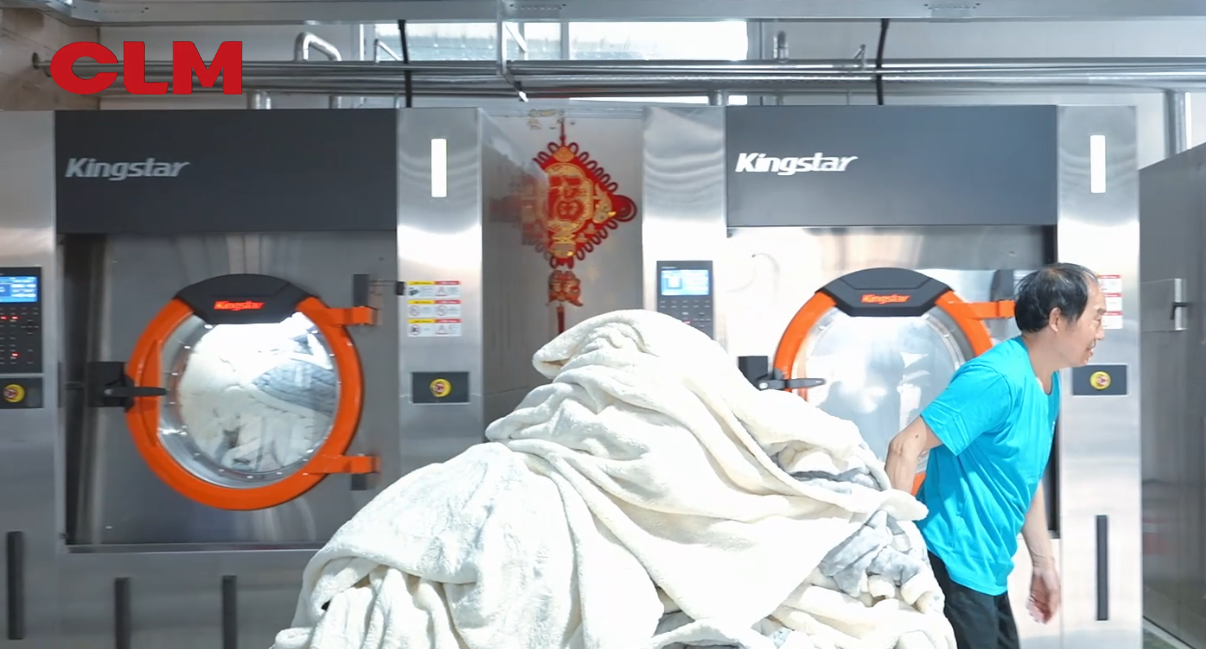In the present fierce competition in the global linen laundry industry, quality control is the core competitiveness for the survival and development of enterprises. However, many laundry plants still face problems like a lack of quality control. This not only has a bad impact on the commercial benefits of the enterprises but also reduces customer satisfaction. In this article, we will deeply discuss the main issues of the current lack of quality control in laundry factories and propose systematic solutions to provide an idea of practical management for operators in the linen laundry industry and help enterprises realize the overall improvement of quality control.
Analysis of the Current Deficiency in Quality Control
In the linen laundry industry, the deficiency in quality control has been an important bottleneck restricting the development of enterprises.
❑ Missing Process Links
Many laundry plants lack systematic quality inspection points and standard operating procedures (SOPs), which results in a lack of a clear implementation basis for quality control. From the reception, washing, drying of linen to ironing and shipment, the quality standards for each link are ambiguous, which cannot effectively guarantee the quality of the final product.
❑ Weak staff awareness
Some employees have an insufficient understanding of the importance of quality and lack an active sense of quality. They always consider the quality as the responsibility of the management and neglect their own key roles in the quality control. The lack of this awareness makes quality problems frequently occur, which are difficult to solve effectively.
❑ Insufficient training
The lack of a consistent quality control training system is a common problem faced by many laundry plants. New employees cannot get systematic training about quality when they join the company, and the employees on the job have also failed to receive regular quality improvement training. This leads to the employees not being accurately identified and prevents quality problems in the practical operations, which influence the overall quality level.
❑ Imperfect incentive mechanism
The low correlation between quality performance and rewards and punishments is another major issue in current quality control. Many laundry plants haven’t established an effective quality performance assessment mechanism, and the quality performance of employees has not been linked to their salaries, promotions… As a result, employees lack the motivation to improve quality, resulting in quality problems always occurring.
❑ Missing feedback mechanism
After finding quality problems, there is no effective closed-loop handling mechanism. The customers’ complaints and abnormal inner quality often cannot be analyzed and improved promptly and effectively. The recurring problems severely affect the reputation of the company and customer satisfaction.
Systematic Measures to Enhance Employees’ Quality Awareness
In terms of the above problems, laundry plants should establish a systematic quality control structure and comprehensively improve employees’ quality awareness in terms of four aspects: quality management system, the training system, the incentive mechanism, and the feedback mechanism.
❑ Establish a complete quality control system
● Make a standardized operating procedure (SOP)
Make detailed quality standards, and clarify the quality inspection points and acceptance criteria. By visually presenting key quality control parameters, it ensures that employees can clearly understand the quality requirements during the operation process.
E.g., at the linen receiving stage, clearly define the quality standards, such as the appearance and stain degree of the linen. During the washing process, parameters such as the amount of detergent used and the washing time are specified to ensure the stability of the washing quality.
● Implement full-process quality control
Establish the complete quality control system: receiving, washing, drying, ironing, and delivery. Set quality inspection points in every link to make sure the quality problems can be found and solved promptly.
The inspection of linen: Establish the quality standard of the received linen and do the inspection of every batch of linen’s appearance, quantity, and basic hygienic conditions to prevent unqualified linen from entering the productivity process.
Process control: Set the quality inspection points for the washing, drying, ironing, and other links. By regularly conducting spot checks and equipment monitoring, ensure that the quality of every link meets the standard.
Finished product inspection: Random quality spot checks should be done before shipment, with a focus on inspecting the cleanliness, damage, and ironing quality of the linen to ensure that the linen delivered to customers meets the highest standards.
❑ Strengthen the quality training system
● Hierarchical training program
Make hierarchical quality training plans according to the employees from different positions and levels. When the new employees enter the company, they should receive the 8-hour basic quality training and 4-hour job quality requirements training. Employees on the job should receive two hours of quality-themed training every month. Team leaders need to receive specialized training in quality management skills to enhance their quality control capabilities.
By hierarchical training, every employee can accurately understand and implement the quality requirements of their own positions.
● Diversified training forms
Adopt multiple training forms to improve the training effects, including the on-site practical operation demonstrations, quality case analysis meetings, quality knowledge competitions, and experience sharing of “Quality Pioneers”…
● Training content design
The training content should contain the awareness of quality cost (calculation of inferior costs), analysis of customer complaint cases, and identification and prevention of common quality defects.
By training, the employees can know the quality problems and their impact on the cost of running an enterprise, so as to strengthen their quality cost awareness. By analyzing customer complaint cases, employees can know the quality’s direct impact on customer satisfaction. Identifying and preventing the common quality drawbacks can improve the employees’ practical operational abilities.
❑ Establish the quality incentive mechanism
● Quality performance assessment
Incorporate quality indicators into the employee performance appraisal system (KPI), and it is recommended that the weight of quality account for 30% to 40% of the performance appraisal. By clear quality indicators, like pass rate and rework rate, the employees’ quality performance can be quantified.
● Quality reward system
Set the monthly “Star of Quality” selection and reward mechanism to honor and reward outstanding employees. Also, give rewards to the employees who propose quality improvement plans so as to make employees actively participate in quality improvement activities.
● Quality responsibility traceability
Establish a quality responsibility traceability system to associate and record the quality issues with the responsible persons. When there is a massive quality accident, establish an accountability mechanism to ensure that responsibilities are assigned to individuals. Through responsibility traceability, employees can be made clear about their quality responsibilities, enhancing their quality awareness and sense of responsibility.
❑ Establish a quality feedback and improvement mechanism
● Quick response to the quality problems
Establish a quality issue response process in 24 hours and set up a quality anomaly alarm mechanism. Once a quality issue is detected, the response procedure should be initiated immediately to ensure that the problem can be resolved promptly.
● Closed-loop management of customer feedback
Do the closed-loop management of customer feedback to ensure that the cause analysis of the problems reported by customers can be completed in 48 hours, and the improvement plan can be fed back in 72 hours.
By this management, the problems that customers care about can be promptly solved, increasing customer satisfaction.
● Continuous improvement of the mechanism
Hold the quality analysis meeting to summarize the quality issues of the current month, analyze the reasons, and make the improvement measures. Use the PDCA cycle (plan-do-check-act) to continuously optimize the quality control system.
Establish the quality improvement project team to focus on the key quality problems and carry out special improvement activities to improve the quality levels of the enterprises continuously.
Expected Effect
By the above systematic quality management establishment and the employees’ quality improvement measures, laundry plants can achieve the following results.
❑ The quality pass rate has increased by 30% to 50%
By virtue of the whole-process quality control and the enhancement of employees’ quality awareness, the final quality pass rate of linen has been significantly improved.
❑ The customer complaint rate has decreased by 40% to 60%
Respond quickly to customer feedback and promptly improve quality issues to effectively reduce customer complaint rates and enhance customer satisfaction.
❑ The rework rate has decreased by 25% to 35%
Through the optimization of quality control, rework caused by quality issues has been reduced, and production efficiency has been improved.
❑ The rate of employees’ active quality reporting has increased
The enhancement of employees’ quality awareness will prompt them to proactively report quality issues, creating a favorable atmosphere where all staff participate in quality management.
❑ Form a quality culture of continuous improvement
Through a continuous quality improvement mechanism and quality management involving all employees, form a continuous improvement culture centered on quality, laying a solid foundation for the long-term development of the enterprise.
Conclusion
In the global linen laundry industry, quality control is the core competence of the development of enterprises. Nowadays, many laundry plants face the problem of lacking quality control, which severely affects the economic benefits of enterprises and customer satisfaction. By establishing a complete quality control system, strengthening the quality training system, establishing the quality reward systems, and improving the quality feedback and upgrade system, enterprises can effectively solve these problems and achieve the overall improvement of quality control. Operators in the linen laundry industry should attach great importance to quality management, treating it as a key strategy for enterprise development. Through systematic management measures and a quality culture involving all employees, they should drive the enterprise towards a new journey of high-quality development.
Post time: Jul-14-2025




